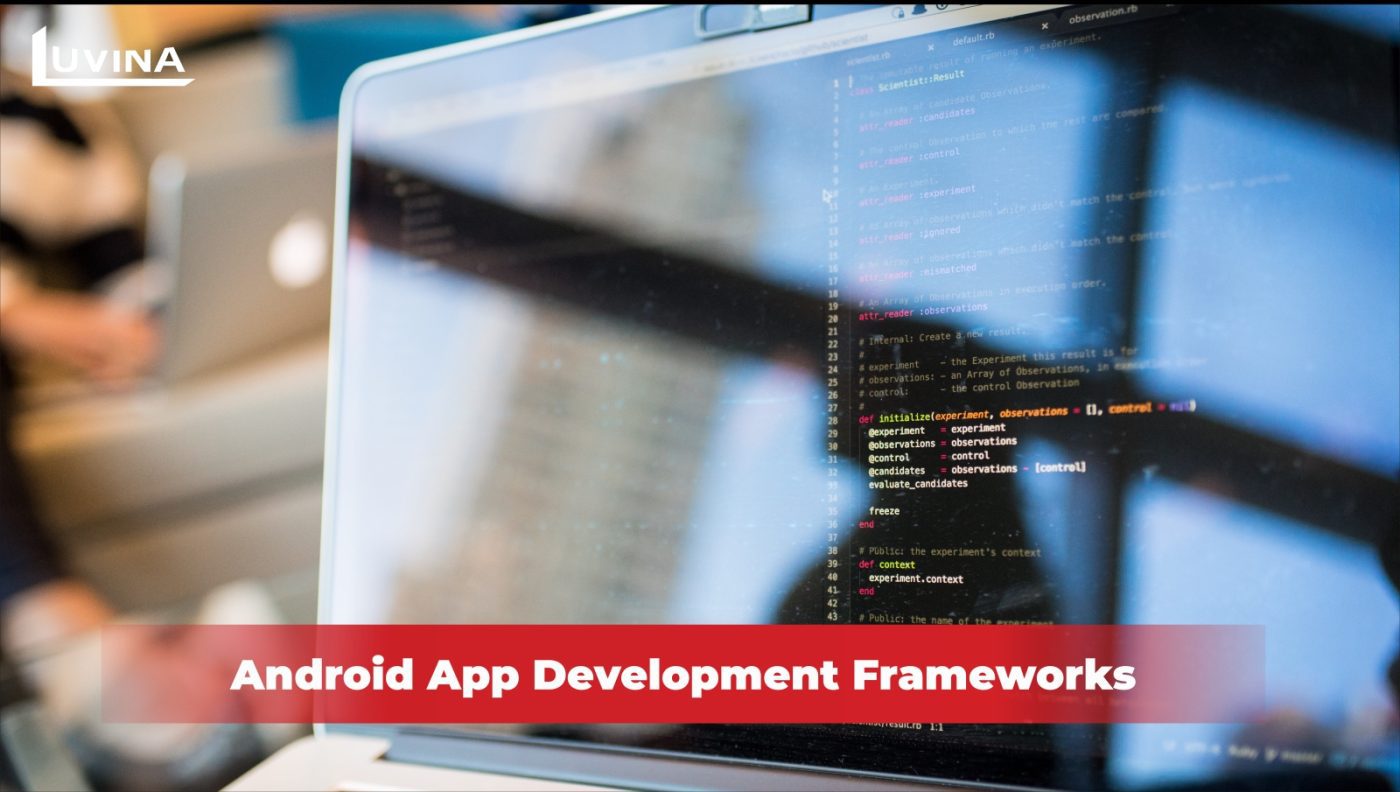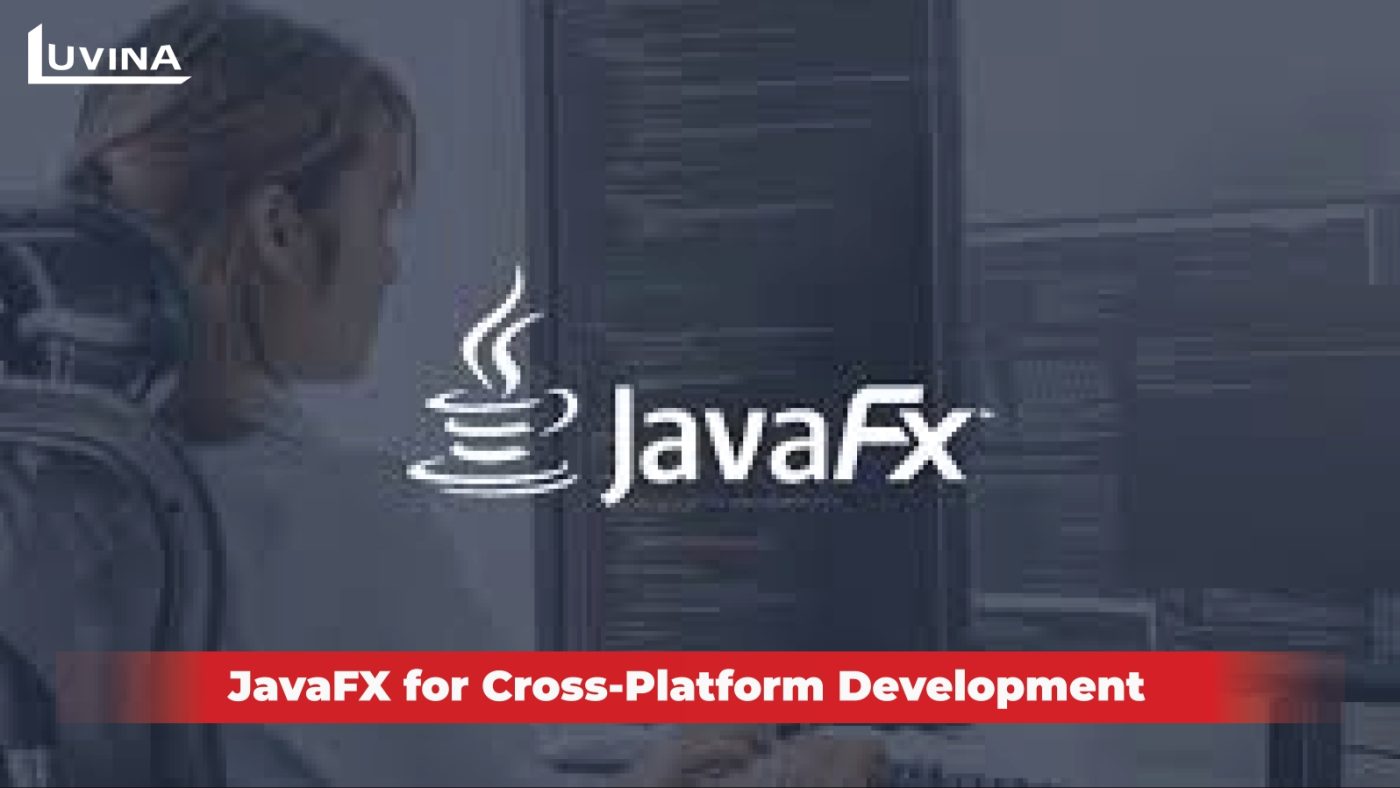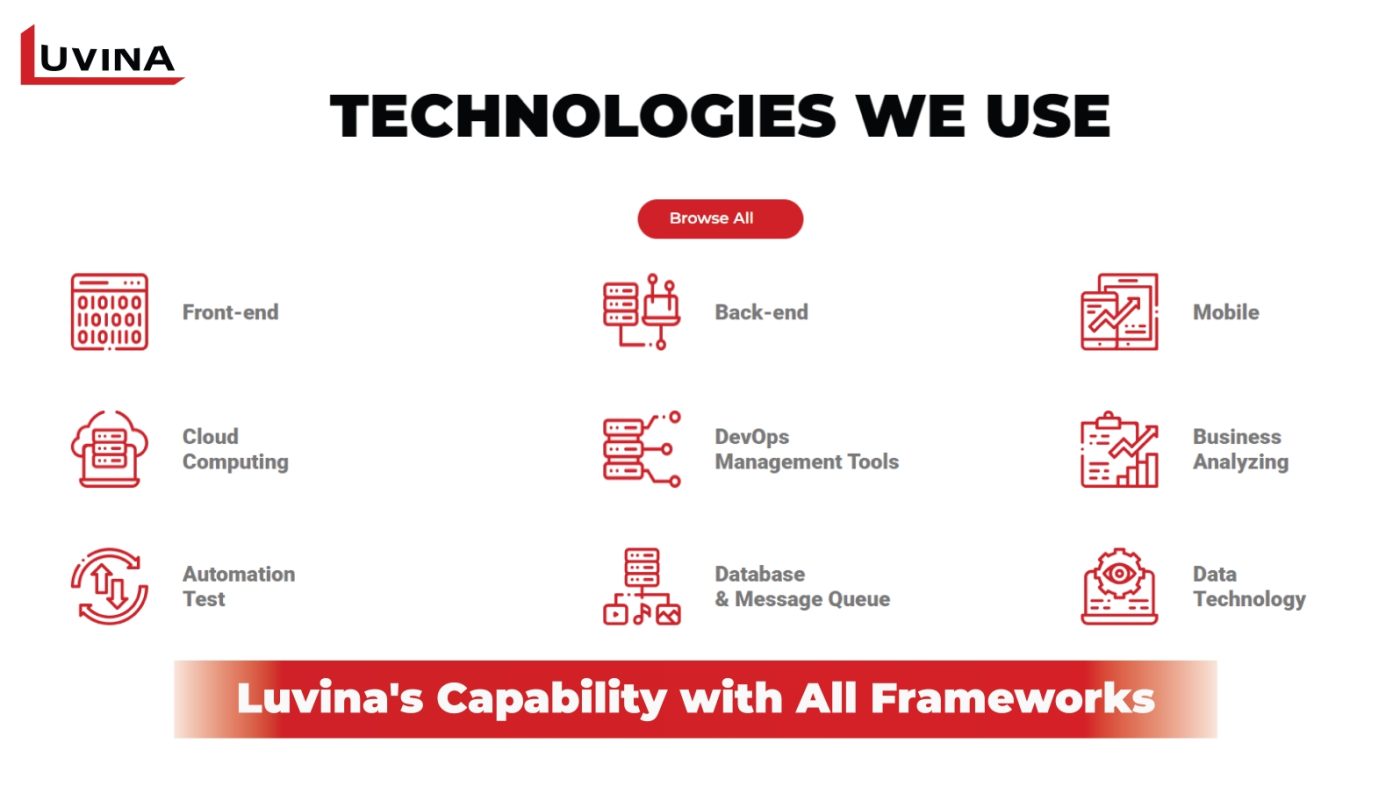In the dynamic world of Android app development, the choice of the right framework is a decision that can significantly impact the development process and the quality of the final product. With a multitude of frameworks available, developers often find themselves at a crossroads when it comes to making this crucial choice. In this guide, we’ll navigate the landscape of Android app development software frameworks, shedding light on some of the most popular options, and we’ll also touch upon how Luvina, a renowned IT outsourcing company, is capable of harnessing the power of all these frameworks.

Popular Frameworks for Android App Development
When it comes to Android app development, there’s no shortage of frameworks to choose from. We’ll explore a few of the most prominent ones:
1. React Native: Cross-Platform Development
React Native has been gaining significant traction in recent years. It’s known for its cross-platform capabilities, allowing developers to share a substantial amount of code between Android and iOS applications. The hot reload feature makes it a favorite among developers, enabling rapid development and testing.
React Native allows developers to create apps that can run on both Android and iOS devices, using the same codebase. This reduces the development time and cost, as well as the maintenance effort.
React Native is based on JavaScript, a popular and widely used programming language. It also uses React, a library for building user interfaces. React Native apps are composed of reusable components that can be easily updated and rendered.
React Native has a feature called hot reload, which enables developers to see the changes they make to the code instantly on the app screen, without losing the app state. This makes the development and testing process faster and more efficient.
>> See more: React Native App Development Cost Breakdown
2. Flutter: Google’s Open-Source Framework
Flutter is a framework developed by Google that allows developers to create beautiful and responsive user interfaces for mobile, web, and desktop applications. Flutter uses a widget-based approach to UI development, which means that every element of the app is a reusable and customizable component. Widgets can be arranged in a hierarchy to create complex layouts and animations. Flutter also provides a rich set of built-in widgets that follow the Material Design and Cupertino guidelines for Android and iOS apps respectively.
One of the main advantages of Flutter is its cross-platform capability, which enables developers to write one codebase that can run on multiple platforms without compromising on performance or quality. Flutter apps are compiled into native code, which means they can leverage the device’s full capabilities and run smoothly and fast. Flutter also supports hot reload and hot restart features, which allow developers to see the changes they make to the code instantly on the app screen, without losing the app state or restarting the app. This makes the development and testing process faster and more efficient.
However, Flutter also has some disadvantages that developers should be aware of. One of them is the limited availability of third-party libraries and plugins, compared to more established frameworks such as React Native. Flutter is still relatively new, and the number of packages and tools that support it is not as large as other frameworks. This means that developers may have to write more code or find alternative solutions for some features or functionalities that are not available in Flutter.
>> Also read: Mastering UI/UX Design in Flutter Application Development
JavaFX: Building Desktop and Mobile Apps

JavaFX is a framework that enables developers to create applications for various platforms, including Android, desktop, web, and embedded devices. JavaFX is based on Java, a popular and widely used programming language that offers a rich set of libraries and tools. JavaFX also uses a declarative scripting language called FXML, which allows developers to define the user interface in XML format.
One of the benefits of JavaFX is its versatility and portability, which allows developers to target multiple platforms with the same codebase. JavaFX applications can run on any device that supports a Java Virtual Machine (JVM), which means they can leverage the full capabilities of the device and run smoothly and fast. JavaFX also supports native packaging, which enables developers to create self-contained applications that include the JVM and all the necessary dependencies.
However, JavaFX also has some drawbacks that developers should be aware of. One of them is the learning curve, which can be steep for beginners or developers who are not familiar with Java or FXML. JavaFX requires a good understanding of the Java language and its concepts, such as object-oriented programming, generics, lambda expressions, and concurrency. FXML also has its own syntax and rules, which can be confusing or tedious to write and maintain.
Making the Right Decision
While each framework has its advantages, making the right choice requires careful consideration. It’s vital to match the framework with your project’s specific needs and constraints. We’ll provide guidance on the factors you should take into account when making this critical decision.
Luvina, a TOP IT outsourcing company in Vietnam, deserves a special mention. With its extensive experience and expertise, Luvina is capable of working with all these frameworks, ensuring that clients can choose the one that best suits their project requirements. Whether it’s React Native, Flutter, JavaFX, or any other, Luvina’s skilled team can deliver exceptional results.
>> See more: Top 10 Best Mobile App Development Companies

Conclusion
As we conclude this guide, it’s evident that the choice of a framework is a pivotal decision in Android app development. Each framework has its strengths, and the selection should align with your project’s unique goals. It’s reassuring to know that Luvina, a distinguished player in the industry, stands ready to harness the capabilities of all these frameworks, ensuring that your project is in expert hands. Make your choice wisely, and your Android app development journey will be poised for success.
{ Get everything you ever
wanted to know about IT.}
Read More From Us?
Sign up for our newsletter








Read More From Us?
Sign up for our newsletter
Read More From Us?
Sign up for our newsletter